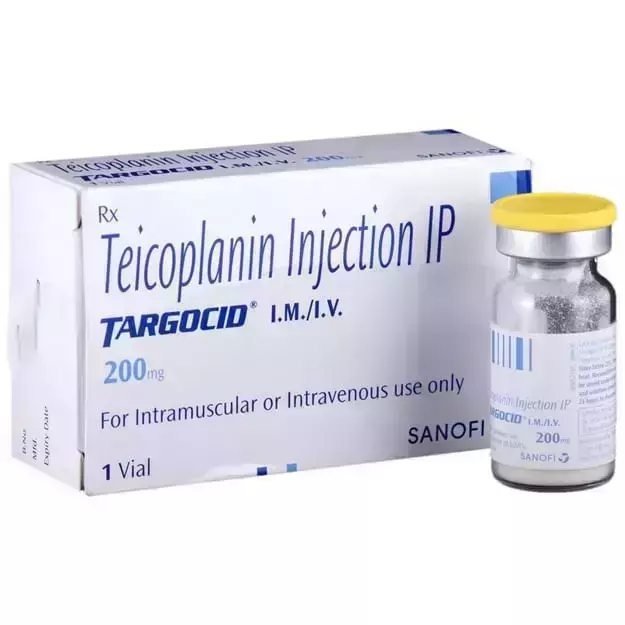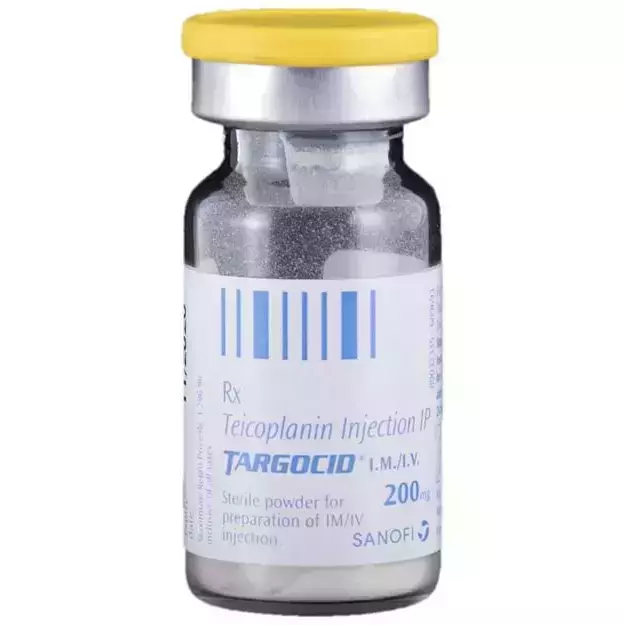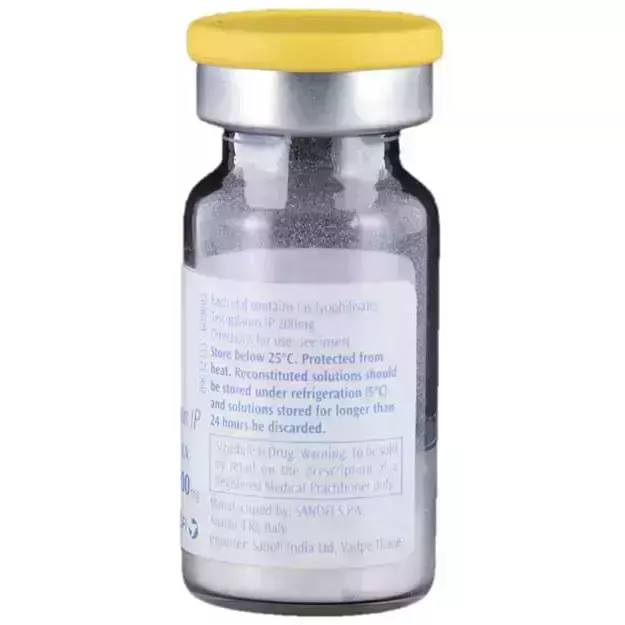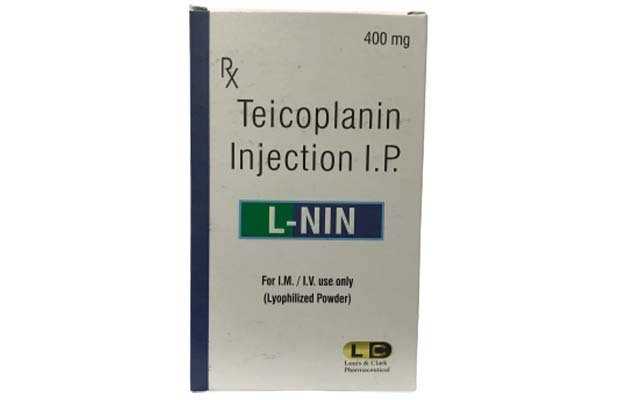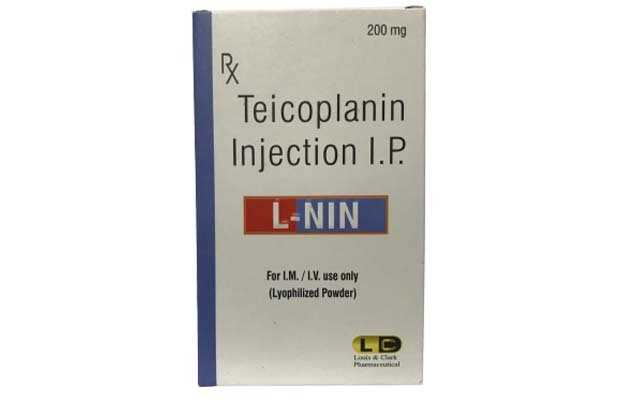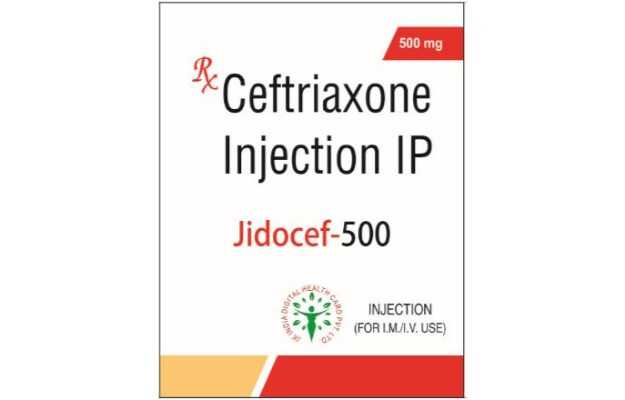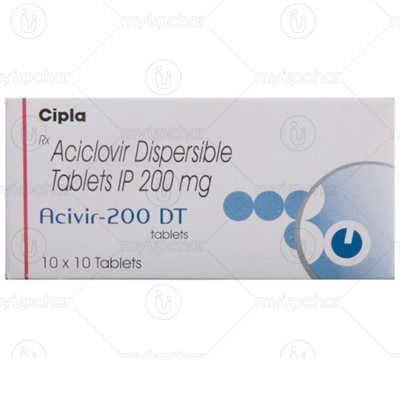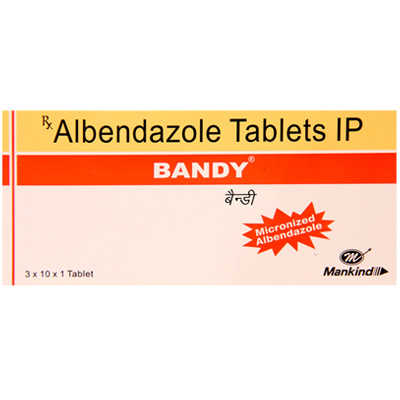Targocid 200 Mg Injection, a prescription drug, is manufactured in various forms such as Injection. Primarily, it is used for the treatment of Endocarditis. Other than this, Targocid 200 Mg Injection has some other therapeutic uses, which have been discussed ahead.
The correct dosage of Targocid 200 Mg Injection depends on the patient's age, gender, and medical history. Individual symptoms and route of administration also determines the right dosage. For detailed information on this, read through the dosage section.
Common side effects of Targocid 200 Mg Injection include Rash, Itching or burning, Fever. Besides the aforementioned side effects, there are other adverse effects of Targocid 200 Mg Injection as well, which are listed below. Such side effects of Targocid 200 Mg Injection normally do not last long and go away once the treatment is completed. However, if these continue for a longer time, consult your doctor right away.
In addition, Targocid 200 Mg Injection's effect is Unknown during pregnancy and Unknown for lactating mothers. In addition, Targocid 200 Mg Injection's effects on the liver, heart and kidney are discussed below in the Targocid 200 Mg Injection related warnings section.
Other contraindications of Targocid 200 Mg Injection have been discussed in the sections ahead.
Drug interactions for Targocid 200 Mg Injection have been reported in the medical literature. See below for a complete list.
Along with the above-mentioned precautions, remember that taking Targocid 200 Mg Injection is considered not safe while driving, and is not addictive.
X

